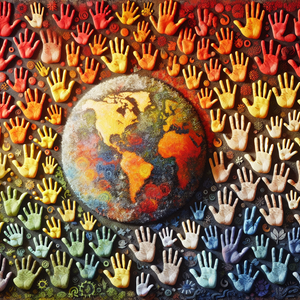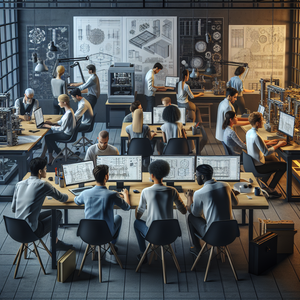CAD in Fashion: The New Frontier for Designers

Traditionally, fashion design relied heavily on hand sketches and physical prototypes, a process that was often time-consuming and resource-intensive. CAD technology has streamlined this workflow, enabling designers to produce digital representations of their ideas with remarkable precision. Tools within CAD software allow for the manipulation of shapes, colors, and textures, granting designers the ability to visualize their concepts in real-time and make adjustments on the fly. For instance, a designer can easily alter the fit of a garment or modify the pattern of a fabric with just a few clicks. This flexibility accelerates the design process while simultaneously enhancing creativity. Designers can experiment with various combinations without the constraints posed by physical materials, leading to innovative and unique designs that might not have been feasible before.
Supporting Example: Designer Innovations
One notable example of CAD's transformative power in fashion is the work of designer Iris van Herpen. Known for her avant-garde creations, van Herpen utilizes CAD to visualize and manipulate complex geometric structures. This technology has enabled her to produce groundbreaking designs that merge fashion and technology seamlessly. Her pieces often feature intricate patterns and forms that would be exceedingly difficult to achieve without advanced design software, showcasing the immense potential of CAD in elevating fashion creativity.
Innovating Through Simulation
Beyond mere sketching, CAD allows designers to simulate how fabrics will behave in real life. This capability is particularly significant when working with complex materials or intricate designs. For example, a designer can visualize how a silk dress will drape or how a heavily embroidered jacket will move as the wearer walks. Such simulations assist in anticipating potential issues before production, ultimately reducing waste and enhancing the likelihood of a successful final product.
Supporting Example: Enhanced Realism
The ability to simulate fabric behavior can significantly improve the design process. Designers can experiment with various fabric types and patterns, understanding how they will function in real-world applications. This not only leads to better design outcomes but also fosters a more sustainable approach to fashion, as it minimizes trial and error in the physical prototyping phase.
Sustainability and Customization
As the fashion industry faces increasing scrutiny regarding its environmental impact, CAD technology offers promising opportunities for more sustainable practices. By enabling designers to create digital samples, CAD reduces the need for physical prototypes, which often contribute to landfill waste. Additionally, the ability to plan production runs more effectively helps minimize overproduction—a significant issue in the traditional fashion cycle. Customization is another vital aspect of CAD’s influence on fashion. In an era defined by the rise of made-to-order clothing and personalized fashion, CAD enables designers to cater to individual customer preferences. Brands can offer tailored fits and unique designs that reflect personal style without the necessity for large inventories. Companies like Unmade and Son of a Tailor exemplify this trend, utilizing CAD to provide customization options that allow customers to engage in the design process and receive garments that are uniquely theirs.
Challenges and the Future of CAD in Fashion
Despite its many advantages, integrating CAD into fashion design is not without its challenges. The initial investment in software and training can be substantial, particularly for smaller brands. Furthermore, the learning curve associated with mastering advanced tools can pose a barrier for some designers. However, as technology continues to evolve and become more accessible, these challenges are likely to diminish. Looking ahead, the potential for CAD in fashion is immense. As augmented reality (AR) and virtual reality (VR) technologies become more prevalent, the interaction between designers and consumers will undergo dramatic changes. Envision a future where customers can virtually try on garments before making a purchase, all made possible by the groundwork laid by CAD technology.
The integration of CAD technology in the fashion industry marks a significant turning point in how garments are designed, produced, and consumed. By streamlining the design process, enhancing creativity, promoting sustainability, and enabling customization, CAD is helping to shape a new frontier for fashion. As designers continue to embrace this technology, the industry will undoubtedly evolve, paving the way for innovative practices and greater consumer engagement. The marriage of fashion and technology is not merely a trend; it represents a revolution that promises to redefine the landscape of creativity and production for years to come, demonstrating the vital role that CAD will play in the future of fashion design.
CAD Fashion Designer
Large fashion houses, tech-driven startups, and apparel manufacturers
Core Responsibilities
Utilize CAD software to create detailed garment designs and technical specifications.
Collaborate with product development teams to ensure designs meet production capabilities and timelines.
Conduct fabric simulations to assess drape and fit before physical prototypes are made.
Required Skills
Proficiency in CAD software (e.g., Adobe Illustrator, CLO 3D).
Strong understanding of textiles and garment construction.
Experience in fashion design and a portfolio showcasing CAD projects.
Fashion Technologist
Fashion brands, textile companies, and innovation labs
Core Responsibilities
Research and implement new technologies in the fashion design and production process.
Develop and maintain technical documentation for garment construction, including CAD files and specifications.
Collaborate with designers to optimize designs for manufacturing efficiency.
Required Skills
Knowledge of garment manufacturing processes and production technologies.
Familiarity with 3D modeling software and design tools.
Analytical skills to assess the impact of technological advancements on design.
Sustainable Fashion Consultant
Consulting firms, fashion brands focused on sustainability, and NGOs
Core Responsibilities
Advise brands on sustainable practices, including the use of CAD for reducing waste in design.
Conduct lifecycle assessments to evaluate the environmental impact of materials and production methods.
Develop strategies for integrating sustainable technologies into fashion design and manufacturing processes.
Required Skills
Expertise in sustainability practices within the fashion industry.
Strong communication skills to educate teams about sustainable design principles.
Experience with CAD software as it relates to sustainable design.
Digital Pattern Maker
Apparel manufacturers, fashion design studios, and bespoke tailoring shops
Core Responsibilities
Create and modify digital patterns using CAD software for various garment styles.
Work closely with designers to translate sketches into technical patterns ready for production.
Ensure accuracy and fit of patterns through digital simulations and adjustments.
Required Skills
Proficiency in pattern-making software (e.g., Gerber, Optitex).
Strong understanding of garment construction and fit.
Attention to detail and problem-solving skills for pattern adjustments.
Virtual Reality Fashion Experience Designer
Tech companies, fashion brands venturing into virtual experiences, and digital marketing agencies
Core Responsibilities
Design immersive virtual reality experiences for showcasing fashion collections.
Collaborate with fashion brands to develop virtual fashion shows and try-on solutions.
Utilize CAD and 3D modeling skills to create lifelike digital garments for VR environments.
Required Skills
Experience with VR design software (e.g., Unity, Unreal Engine).
Strong creative vision coupled with technical skills in CAD and 3D modeling.
Knowledge of user experience design principles for virtual environments.


